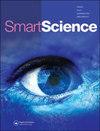Energy Saving in an Air-Conditioning System Using Interdisciplinary Energy Conversion Approach
IF 2.4
Q2 MULTIDISCIPLINARY SCIENCES
引用次数: 0
Abstract
ABSTRACT Air conditioning/air cooling systems are necessities of the modern urban world. These applications require huge power and have an adverse environmental impact because of the ozone-depleting coolants used. Saving electrical energy for compressors is made possible by redesigning the prime movers. Interdisciplinary approaches such as electrical engineering, mechanical engineering, thermal science, and solar energy produce electrical energy, which drastically saves more energy than the conventional system. This system converts solar radiations to heated steam to heat exchange to convert liquid coolant to vapor to produce a cooling effect using low energy. The experiment is conducted in a 1Ton conventional vapor compression system using a low-power consumption system built with an ‘ejector-based cooling system’ and ‘Scheffler concentrator-based heating system.’ The results reveal that 80% of energy is saved using unconventional interdisciplinary approaches in the subsystem design. GRAPHICAL ABSTRACT跨学科能量转换方法在空调系统节能中的应用
空调/空气冷却系统是现代城市世界的必需品。这些应用需要巨大的电力,并且由于使用消耗臭氧的冷却剂而对环境产生不利影响。通过重新设计原动机,可以节省压缩机的电能。电气工程、机械工程、热科学和太阳能等跨学科方法产生电能,这比传统系统大大节省了能源。该系统将太阳辐射转化为加热蒸汽进行热交换,将液体冷却剂转化为蒸汽,以低能耗产生冷却效果。实验是在一个1吨的传统蒸汽压缩系统中进行的,使用了一个低功耗系统,该系统由“基于喷射器的冷却系统”和“基于舍弗勒集中器的加热系统”组成。“结果表明,在子系统设计中使用非常规的跨学科方法节省了80%的能源。图形抽象
本文章由计算机程序翻译,如有差异,请以英文原文为准。
求助全文
约1分钟内获得全文
求助全文
来源期刊

Smart Science
Engineering-Engineering (all)
CiteScore
4.70
自引率
4.30%
发文量
21
期刊介绍:
Smart Science (ISSN 2308-0477) is an international, peer-reviewed journal that publishes significant original scientific researches, and reviews and analyses of current research and science policy. We welcome submissions of high quality papers from all fields of science and from any source. Articles of an interdisciplinary nature are particularly welcomed. Smart Science aims to be among the top multidisciplinary journals covering a broad spectrum of smart topics in the fields of materials science, chemistry, physics, engineering, medicine, and biology. Smart Science is currently focusing on the topics of Smart Manufacturing (CPS, IoT and AI) for Industry 4.0, Smart Energy and Smart Chemistry and Materials. Other specific research areas covered by the journal include, but are not limited to: 1. Smart Science in the Future 2. Smart Manufacturing: -Cyber-Physical System (CPS) -Internet of Things (IoT) and Internet of Brain (IoB) -Artificial Intelligence -Smart Computing -Smart Design/Machine -Smart Sensing -Smart Information and Networks 3. Smart Energy and Thermal/Fluidic Science 4. Smart Chemistry and Materials
 求助内容:
求助内容: 应助结果提醒方式:
应助结果提醒方式:


